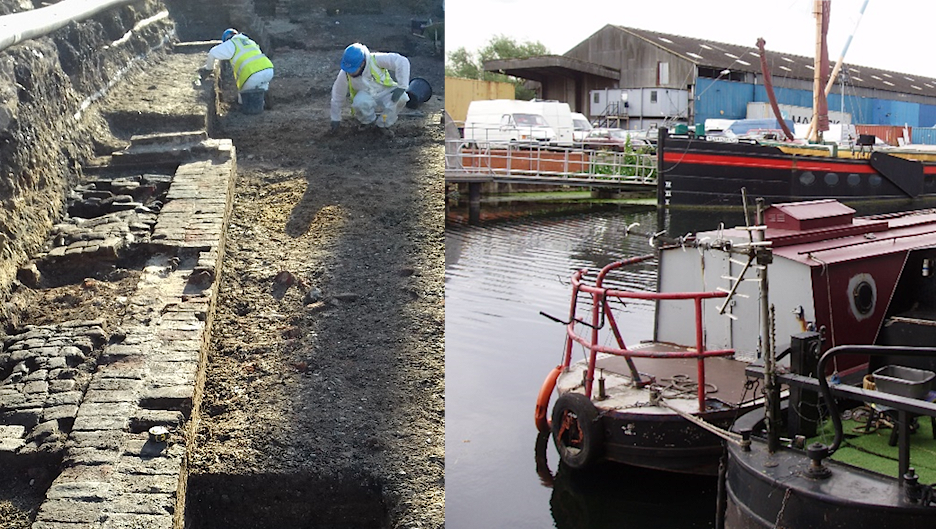
Hale Wharf, Tottenham, London
Client: Muse Developments Ltd and the Canal and River Trust
Project dates: 2016 to 2018
Hale Wharf is a 1.8ha island in north London situated between the Lee Navigation Channel and the River Lea Flood Relief Channel. The Mayor of London has granted permission for the construction of up to 505 residential units, up to 1,607 sqm of non-residential floorspace, a new footbridge and other public realm works.
The site’s archaeological interest lies in the geoarchaeology of the Lea Valley and a mill which may have had its origins in the 13th century. To mitigate the archaeological effects of the development PCA Heritage prepared an Archaeological Mitigation Strategy, a Written Scheme of Investigation and an Archaeology Early Works ITT package. The first parts of the package were completed by MOLA, who prepared a deposit model, and Pre-Construct Archaeology, who undertook a programme of archaeological trial trenching.
The trenching uncovered layers of prehistoric peat and timber land ties associated with a leat shown on the 1844 tithe map. At the same time, monitoring of groundworks encountered remains of a turnpike tollhouse and the mill itself.
PCA Heritage designed and managed the subsequent programme of archaeological excavation. This demonstrated that the first mill was constructed soon after the site was flooded in the late 16th century. A series of rebuilds often reflected subsequent floods or fires until, in 1860, a fire was so devastating that it led to the abandonment of Tottenham Mills.

